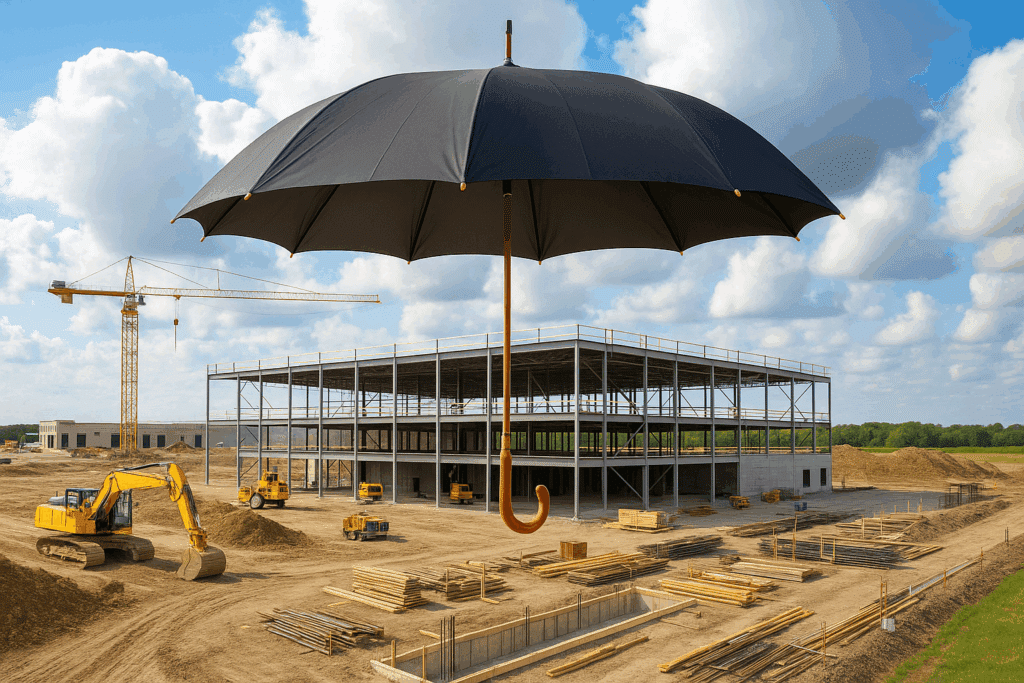
Future-proof your commercial property against rising insurance costs
How strategic design and construction can reduce your insurance premiums and protect your investment
If your commercial property insurance bill gave you sticker shock this year, you’re not alone. Across the country, premiums are rising fast — and many property owners are facing double-digit increases. Whether you’re a developer planning your next project or an owner managing an existing portfolio, the squeeze is real.
Fortunately, there’s something you can do about it, especially if you take a forward-thinking approach to how your property is designed and built.
What’s driving the surge in insurance costs?
There’s no single culprit behind today’s rising premiums — just a perfect storm of risk, cost, and capital pressure. Among the biggest factors:
- More frequent and severe weather events. Catastrophic events, such as floods, wildfires, and hurricanes, are costing insurers billions of dollars. In 2024, severe storms in the Upper Midwest — including hail, tornadoes, and flooding across Wisconsin, Minnesota, and Iowa — caused more than $7 billion in insured losses, according to the National Oceanic and Atmospheric Administration and the Insurance Information Institute.
- Rising construction and replacement costs. Since 2020, the Producer Price Index for construction materials has risen nearly 19%, which directly impacts claim payouts — and, in turn, your premium.
- Litigation risk and “nuclear verdicts.” Juries are awarding higher damages in liability cases, causing insurers to price in greater risk across the board.
- Higher reinsurance premiums. Insurance companies themselves are paying more to offload their risk — up by as much as 50% — and passing those costs along to you.
- A tightening insurance market. Even as some commercial premiums ticked down slightly in early 2025, property insurance remains stubbornly high — and many carriers are reducing capacity or exiting high-risk regions altogether.
In many parts of the country, commercial property owners are seeing annual premium increases of 10% to 17%. In a few coastal and wildfire-prone areas, it’s even worse.
How to fight back: Design and build with risk in mind
You can’t control the global reinsurance market — but you can control how your property is built, protected, and positioned in the eyes of your insurer. Here’s how forward-thinking developers and owners are future-proofing their buildings against rising insurance rates:
-
Design for resilience.
Insurance carriers assess risk based on how well your property can withstand disaster and reward buildings that go beyond code.
Consider:
- Site selection: Selecting a site location with less exposure to severe weather events and disasters can also help reduce premiums.
- Fire-resistant materials: Utilizing materials like concrete, steel, or masonry can lead to lower premiums compared to wood-frame structures due to their natural fire-resistance.
- Noncombustible construction: Incorporating noncombustible building assemblies can lead to potential insurance discounts compared to lumber-framed buildings.
- Durability and longevity: Selecting materials that withstand severe weather conditions like high winds and heavy rain, and have a long lifespan, reduces the risk of damage and potential claims, thereby lowering premiums.
- Fire suppression systems: Incorporating sprinkler systems and smoke detectors dramatically improves fire safety and can reduce premiums.
- Security features: Implementing comprehensive and monitored alarm systems, including burglar alarms, fire alarms, surveillance cameras, and access control systems, can result in insurance discounts.
- Impact-resistant roofing and windows to reduce wind and hail claims.
- Fire-resistant exteriors and defensible landscaping to reduce wildfire risk.
These improvements don’t just make sense from a safety standpoint — they can help you qualify for premium discounts, sometimes up to 5% or more.
-
Document your risk posture.
Insurers want to see that you understand your risks and are managing them proactively. That means:
- Providing loss history and maintenance logs.
- Conducting and sharing risk modeling or property assessments.
- Showing plans for redundancy or mitigation.
Better documentation can make you a more desirable customer — and improve your negotiating power at renewal.
-
Build in sustainability.
Green buildings are good for your risk profile. Properties with certifications like LEED or BREEAM are often viewed as lower risk, leading some carriers to offer better terms, lower premiums, or incentives.
Adding solar with battery backup, energy-efficient HVAC, and enhanced stormwater controls can also reduce business interruption risk — another bonus for your insurer.
-
Time your strategy to market shifts.
Even in a hardening market, there are windows of opportunity. For example, U.S. commercial property rates ticked down modestly — in some cases by nearly 8.5% — after sharp increases in 2023. These dips may provide an opportunity to renegotiate terms or secure lower rates.
What it all means for you
The insurance market may be volatile, but your risk management strategy doesn’t have to be. By integrating resilience, sustainability, and smart documentation into the way you plan and build, you can:
- Protect your investment from extreme weather, disasters, and liability exposure.
- Make your property more insurable — and more attractive to underwriters.
- Create long-term savings by avoiding premium spikes and securing better terms.
At DBS Group, we help clients think beyond code compliance to reduce risk from the ground up. From preconstruction through completion, our team builds value into every square foot — with insurance in mind.
Rising premiums aren’t going away, but smart planning can keep you ahead of the curve. Contact DBS Group to learn how we design buildings that help control long-term insurance costs.